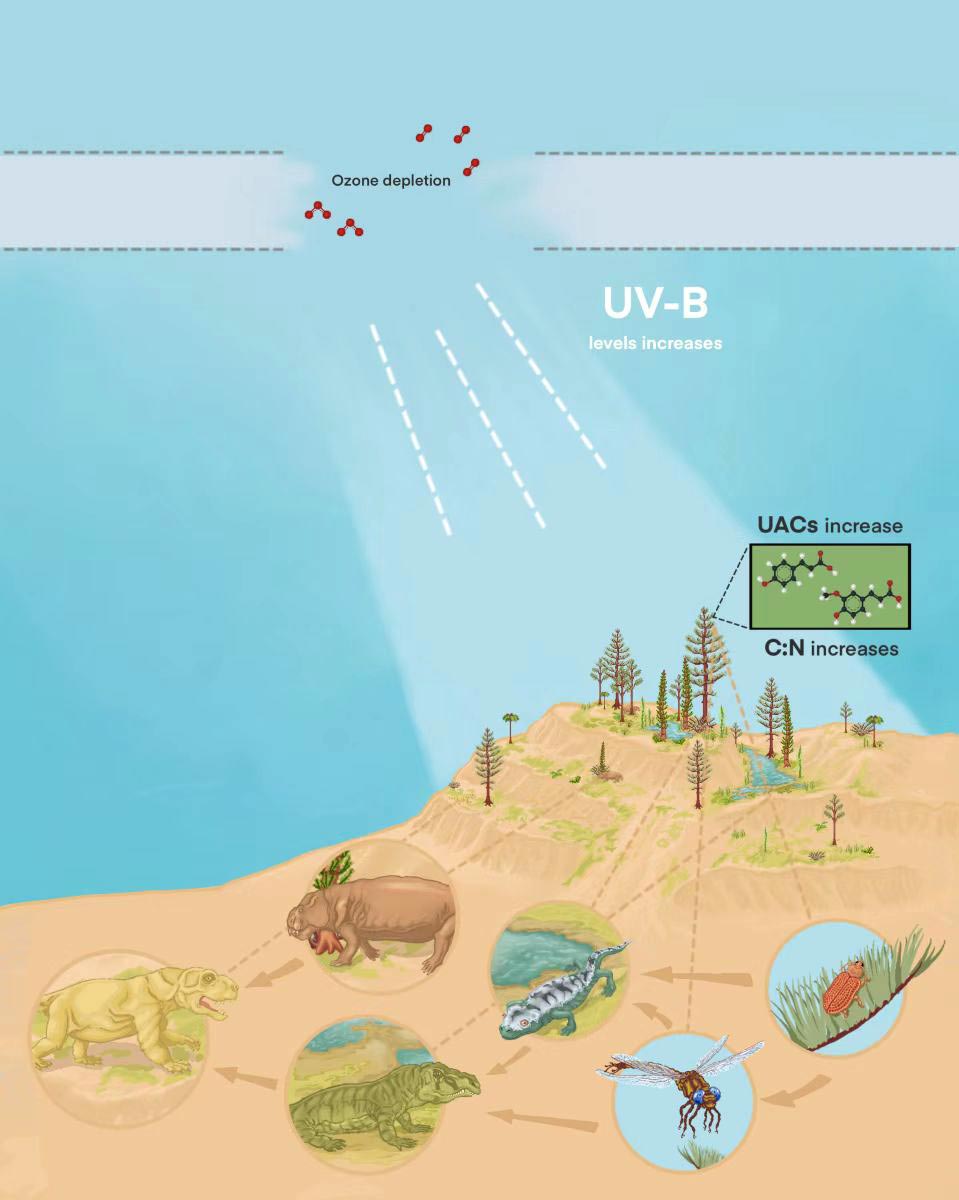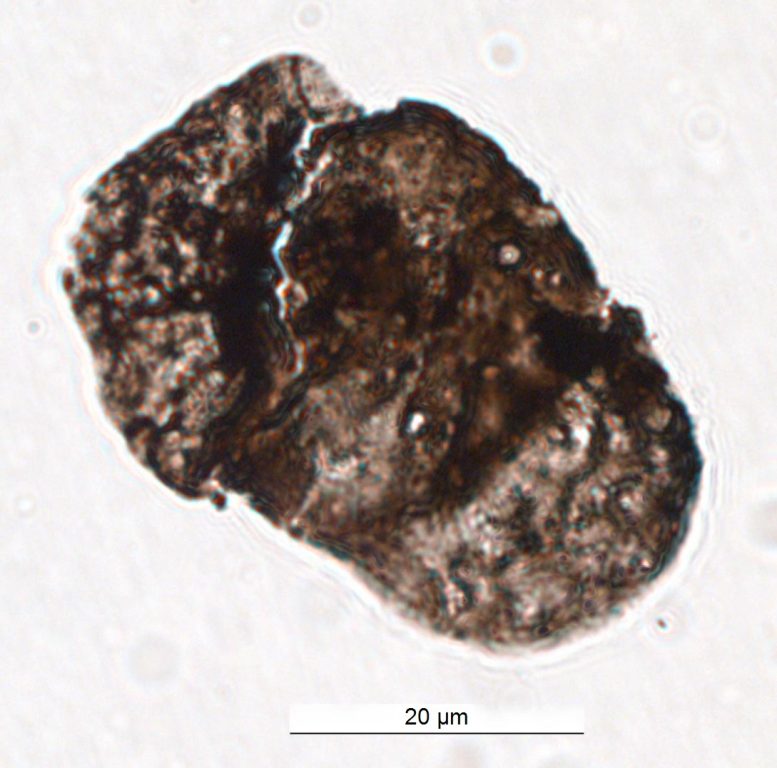
The impacts of ozone depletion and elevated UV-B levels on the terrestrial ecosystem. Credit: Conor Haynes-Mannering, University of Nottingham
Scientists from China, Germany, and the UK led by Prof. LIU Feng from the Nanjing Institute of Geology and Palaeontology of the Chinese Academy of Sciences (NIGPAS) have revealed that pollen preserved in 250-million-year-old rocks contains abundant compounds that function like sunscreen but are produced by plants to protect themselves from harmful ultraviolet (UV-B) radiation.
The presence of these compounds suggests that a pulse of UV-B played an essential role in the end-Permian mass extinction event.
The study was published in
Alisporites-type fossil pollen recovered from Permian-Triassic transitional deposits in the Qubu section. Credit: NIGPAS
Accompanying this global warming event was a collapse of the Earth’s ozone layer. Support for this theory comes from the abundant occurrence of malformed spores and pollen grains that testify to an influx of mutagenic UV irradiation.
Plants require sunlight for New Discovery Reveals UV Radiation Played a Part in Mass Extinction Events.
Reference: “Dying in the Sun: direct evidence for elevated UV-B radiation at the end-Permian mass extinction” by Feng Liu, Huiping Peng, John E. A. Marshall, Barry H. Lomax, Benjamin Bomfleur, Matthew S. Kent, Wesley T. Fraser and Phillip E. Jardine, 6 January 2023, Science Advances.
DOI: 10.1126/sciadv.abo6102

